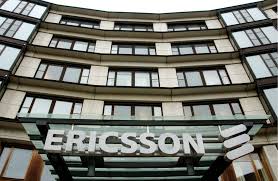Tremendous growth in Data usage
With growing data us-age among Indian
consumers, the to-
tal mobile data traf-
fic is expected to
grow at a CAGR of
around 40 per cent, from 1
exabyte (EB) of data con-
sumption by the end of
2016 to almost almost 8EB per month by 2022.
Ericsson Mobility Report June 2017
ed to increase from the cur-
rent 4GB per smartphone
per month to about 11 GB per
smartphone per month in
2022, complemented by the
fast-pace expansion of
the smartphone industry in
India.
Transition from 4G to 5G
In order to satisfy the demand for data traffic, moreefficient methods need to be
introduced to counter this
demand. Therefore, 5G will
be an important part in the
coming years to support the
increase in traffic in regular
mobile broadband.
“5G is a system that in-
cludes radio access, cloud,
core and management sys-
tems: it inter-works with LTE
and uses network slicing
technologies,” said Nitin
Bansal, Country Manager,
Ericsson India, while ad-
dressing a press conference.
Like the transitions to 2G
and 3G, the move to 5G will
add a new element — the in-
dustrial Internet. And, like
the transition to 4G, it will be
much higher performance
than the previous generation.
5G will also enable organisa-
tions to move into new mar-
kets and build new revenue
streams with radically new
business models and use cas-
es, including IoT applications.
The new capabilities of 5G
will span several dimen-
sions, including tremendous
flexibility, lower energy
needs, greater capacity, band-
width, security, reliability as
well as lower latency and de-
vice costs.
5G introduction is gener-
ally planned on spectrum
bands which are currently
not deployed in networks.
This implies that higher fre-
quencies will have to be used
that inherently provide less-
er coverage. While this would
provide much higher capaci-
ty as large chunks of unused
spectrum is available, opera-
tors would probably need to
combine these high frequen-
cies with 5G channels on
lower bands, that we call ‘5G
anchor bands’.
Collabration of IITs as 5G partners with Ericcson
By combining the higherand lower bands using carri-
er aggregation functionality
in 5G, operators will be able
to offer the 5G coverage and
capacity to customers.
Collaborations form an
important part of 5G deploy-
ments, particularly with
players from the telecom sec-
tor and academia. To this
regards, Ericsson has
teamed up with IIT Delhi for
seamless deployment, apart
from a range of other global
partnerships.
“Partnerships will be a
key for the success of 5G.
Ericsson has signed 5G col-
laboration agreements with
30+ operators, 20 industry
partners and 45 universities
and institutes around the
world including IIT Delhi,”
said Christian Hedelin,
Head of Strategy-Business
Area Networks at Ericsson.
Initial 5G deployments
are likely to be non-stan-
dalone configurations in
mid-bands together with
mmWave frequencies 24-43.5
GHz. A combination of 4G
and 5G bands is expected as
traffic increases and new
use cases mature.










No comments:
Post a Comment